Subjects (Master in Foreign Trade Back Office)
Detailed content and subjects of the Master in Foreign Trade Back Office
Master in International Business.
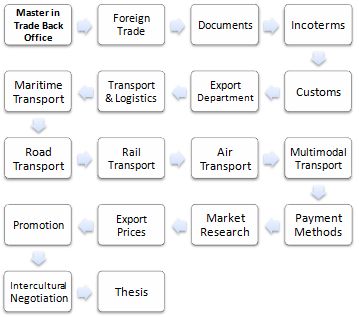
ECTS = European Credit Transfer and Accumulation System
 Enrol / Request for Information
Enrol / Request for Information

Subjects of the Master in Foreign Trade Back Office
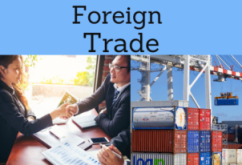
Introduction to the foreign trade (1 ECTS)
- Introduction to the Foreign Trade
- Advantages of exporting
- Resources Needed for exporting
- Starting the Export Activity
- Export Process
- Problems deriving from Non-Internationalization
The objectives of the subject “Introduction to the foreign trade” are the following:
- To understand the nature of exporting and the difficulties that may arise
- To learn about import and export transactions, the difficulties with them and how to overcome these challenges
- To analyze the advantages of exporting and the risks of not exporting
This will be achieved by:
- Examining the fundamental questions related to the export process
- Analysing the challenges to overcome in an export transaction
- Detailing the steps necessary to beginning the export process
Incoterms® 2020 (2 ECTS)
- Introduction to the Incoterms
- What are the Incoterms® 2020?
- Key changes to the Incoterms® 2020
- The Review of the Incoterms® FCA (Free Carrier)
- The change from DAT (Delivered at Terminal) to DPU (Delivered at Place Unloaded)
- Different levels of insurance coverage under CIF and CIP
- Associated costs for each Incoterm (article A9 / B9)
- Analysis of the Incoterms® 2020
- Incoterms® 2020 and international transport
- Incoterms® 2020 for sea and inland waterway transport: FAS (Free Alongside Ship) - FOB (Free On Board) - CFR (Cost and Freight) - CIF (Cost, Insurance & Freight)
- Incoterms® 2020 for any mode of transport: EXW (Ex Works) - FCA (Free Carrier) - CPT (Carriage Paid To) - CIP (Carriage and Insurance Paid to) - DAP (Delivered At Place) - DPU (Delivered at Place Unloaded) - DDP (Delivered Duty Paid)
- How are they used?
- Criteria for selection of the Incoterms® 2020
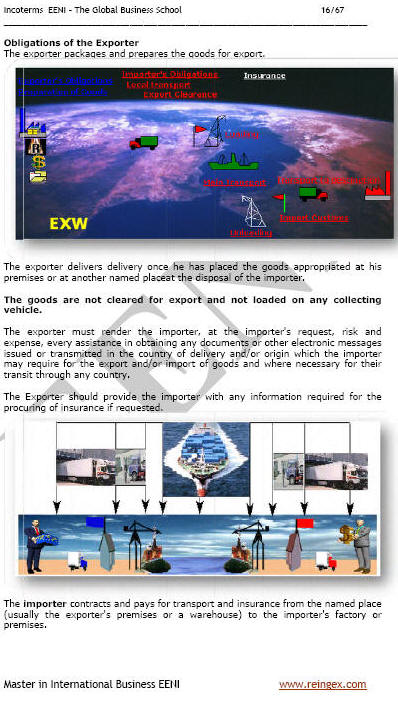
The objectives of the subject “Incoterms® 2020” are the following:
- To understand the importance of the Incoterms® 2020 in Foreign Trade
- To know which Incoterms® 2020 are the most suitable for the different types of International Transport
- To know calculate the export prices based on the Incoterms® 2020
- The risk, cost and necessary procedures according to the selected Incoterm
Foreign Trade Documents (1 ECTS).
- The role of the documents in Foreign Trade
- International transportation documents
- Commercial documents (proforma, invoice, packing list...)
- Origin documents
- Other Foreign Trade Documents
The objectives of the subject “International Trade Documents” are the following:
- To know the function of the main documents used in imports and exports
- To know how to fill them out properly
- To know how to perform the check-list of the Foreign Trade Documents
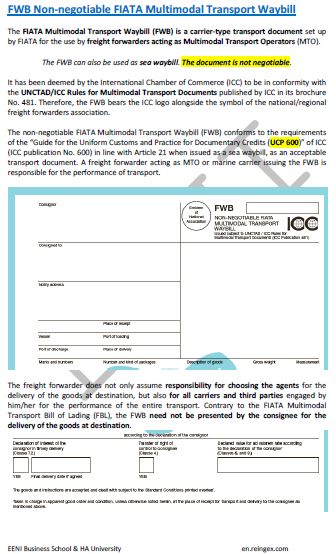
Customs. World Trade Organization (WTO) (4 ECTS).
- Customs in Foreign Trade
- Customs classification
- Customs regime
- The role of the customs agent
- Customs clearance
- Inspection of products at customs
- Origin of products
- Market Access database (EU)
- Trade Facilitation
World Customs Organization (WCO).
- Harmonized System (HS)
- Rules of Origin
- Agreement on Rules of Origin of the WTO
- Trade facilitation
- Customs Procedures
- SAFE Package
- Kyoto Convention
- The World Trade Organization and Customs
- Rules for the customs valuation of products
- Customs Valuation Methods:
- Transaction value
- Identical or similar goods
- Deductive or computed method
- Fall-back
- Rules of Origin
- Import licenses
- The WTO Agreements on Technical Barriers to Trade (TBT), Sanitary and Phytosanitary Measures (MSF), Pre-shipment Inspection
The objectives of the subject “Customs” are the following:
- To understand the customs procedures in Foreign Trade, different commercial regimes and the methods of product classification
- To learn about the fundamental concepts related to the customs: customs clearance, customs valuation, non-tariff barriers and obstacles, pre-shipment inspection, origin of goods, Harmonized System, customs processes..
- To know the process of importing a product and the customs regimes
- To understand the functions of the WCO and the WTO in relation to customs
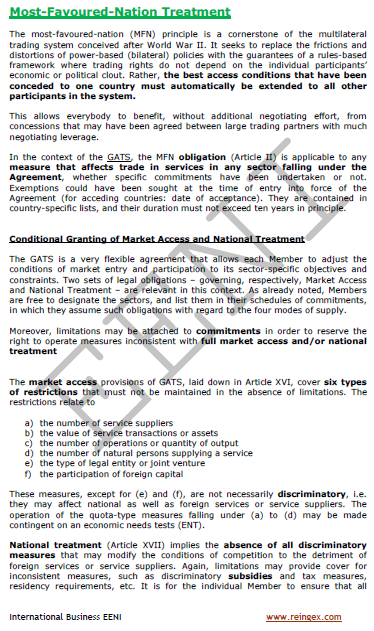
Export Department (1 ECTS).
- Introduction to the Export Department
- Set up and run the export department
- Functions, goals, and organization of the export department
- Resources needed
- Director of International Business, export manager, and country area manager
- Foreign Trade Back Office
- Foreign Trade Assistant
- Secretary of the department of International Trade
- Case Study:
- Analysis of the differences between an Export Department in Spain and Latin America (Iberian America)
- Sales areas assignment in the international department
The objectives of the subject “Export Department” are the following:
- In this subject, the student will learn how to set up and run an export department
- We will also discuss the functions and goals of the export department
This will be achieved by:
- Examining the characteristics of an export manager
- Outlining the most important functions of an export department
- Analysing the goals of an export department and how to benchmark them
- Detailing how to best support the export department work
Introduction to International Transport (5 ECTS)

- Introduction to the International Transport and Logistics
- International transport chain
- Authorized Economic Operator
- Selecting a mode of International Transport
- Costs and insurance of International Transport
- Transport Documents related to International Trade
- Export Packaging
Containers and international transport.
- Customs Convention on Containers
- International Convention for Safe Containers
- Convention Relating to Temporary Admission
International Federation of Freight Forwarders Associations (FIATA).
- Negotiable Combined Transport Bill of Lading (FBL)
- Electronic FIATA Bill of Lading
- FIATA Multimodal Waybill FWB
- Forwarders Certificate of Receipt (FIATA FCR)
- Forwarders Certificate of Transport (FCT)
- Warehouse Receipt

The objectives of the subject “Introduction to International Transport and Logistics” are:
- To have a global vision of logistics and international transport applied to the International Trade
- To understand the functioning of the global transport chain
- To know the different techniques of export packaging and the importance of the Containers
- To understand the basic concepts related to the documents, costs and insurance of International Transport
- To analyze the main documents of the FIATA
Maritime Transport (5 ECTS)
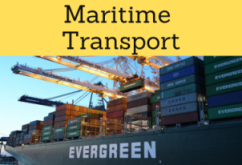
- Introduction to the Maritime Transport
- Analysis of the International Maritime Trade
- BIC
- Chicago Convention (ICAO)
- International Maritime Organization
- International Chamber of Shipping
- Regular lines and charters
- Freight and Maritime Transport Costs. Insurance
- Maritime Transport Agents
- Maritime Transport Documentation.
- Bill of Lading (B/L)
- Electronic FIATA Bill of Lading (eFBL Bill of Lading)
- Main ports of the world
- Legislation related to the International Maritime Transport
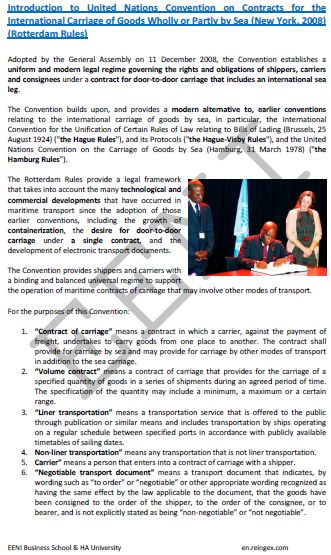
The objectives of the subject “International Maritime Transport” are the following:
- To understand the importance of the Maritime Transport in International Trade
- To understand the functioning of the Maritime Transport
- To know the key players of the Maritime Transport of goods
- To understand the role of the main institutions related to the Maritime Transport (International Maritime Organization, International Chamber of Shipping)
- To know the key concepts related to the marine transport of goods (freight, safety, stowage, risks, insurances...)
- Examine the different concepts related to the insurance and the main clauses of the Maritime Transport
- To analyze the documents related to the Maritime Transport (Bill of Lading) and how to fill them out
- Study the main rules and conventions of the maritime cargo transport (Rotterdam, Hamburg, FAL Rules)
International Road Transport (10 ECTS)

- Introduction to the Road Transport
- International Road Transport Union
- International Guidelines on Safe Load Securing for Road Transport
- Convention on the Contract for the International Carriage of Goods by Road
- Consignment Note (CMR)
- TIR Convention
- TIR Carnet
- Costs and insurance of the Road Transport
- Silk Road
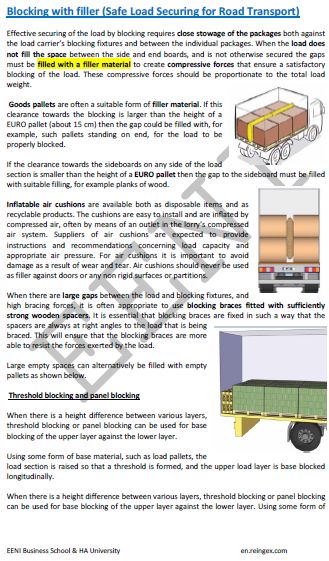

The objectives of the subject “International Road Transport” are the following:
- To understand the importance of the Road Freight transport in International Trade
- To understand the role of the International Road Transport Union (IRU)
- To know how stow safely a load to be transported by a lorry
- To know the key players and the market of the international road freight transport
- To learn the key concepts related to International Transport by road (cost, insurances, risks...)
- To study the main Conventions (CMR, TIR) of the International Road Transport of goods
- To analyze the documents related to the Road Transport (Consignment Note, e-CMR) and how to fill them out
Air Transport (4 ECTS)
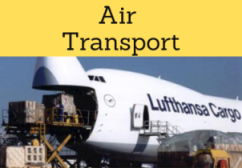
- Introduction to the Air Cargo Transport
- International Civil Aviation Organization (ICAO). Chicago Convention
- Convention for the Unification of Certain Rules for International Carriage by Air
- IATA
- Insurance and costs of the International Air Transport
- Loading devices for the Air Transport
- AWB Document (Air Waybill). e-AWB
- The global air transport market
- The World's largest airports
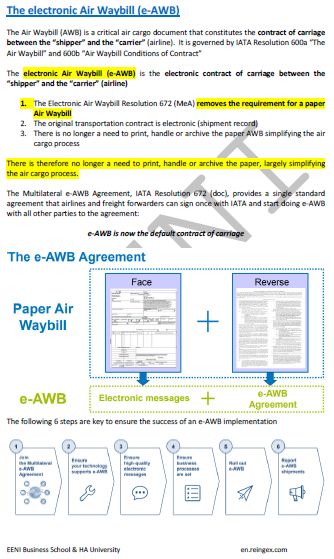
The objectives of the subject “International Air Transport” are the following:
- To understand the importance of the Air Transport in International Trade
- To learn about the role of the International Civil Aviation Organization (ICAO) and the International Air Transport Association (IATA)
- To understand the global air cargo supply chain
- To analyze the documentary flow and documents related to the Air Cargo Transport (Air Waybill, e-AWB) and how to fill them out
- To study the main Conventions related to the International Air Transport
- To know the global situation of the International Air Transport
Rail transport (5 ECTS)
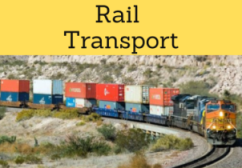
- Introduction to the Rail Transport
- International Rail Transport Committee(CIT)
- UIC
- Intergovernmental Organization for International Carriage by Rail. COTIF Convention (Rail)
- Organization for Cooperation between Railways (OSJD)
- Costs and insurance of the Rail Transport
- Rail Transport Document: Consignment Note
- Economy and railway operations
- CIM, CIT Rail Rules
- Rail transport in Africa
Eurasian Rail Corridors:
- Introduction to the Eurasian rail cargo transport
- Trade volume distribution between the Northern and Southern routes
Combined Transport in Europe
- Rail/Road combined transport in Europe
- General framework and key elements of the Combined Transport in Europe
- The European rail/road combined transport market
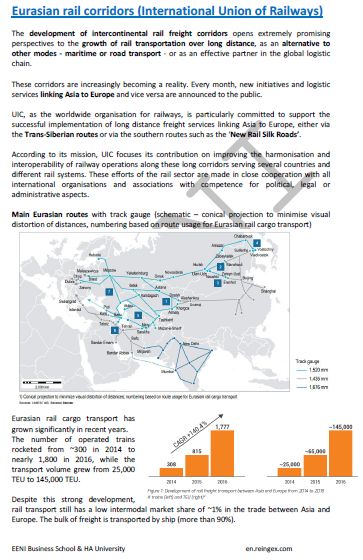
The objectives of the subject “International Rail Transport” are the following:
- To understand the importance of the Rail Transport in International Trade
- To analyze the pillars of the International Rail Transport Law
- To understand the role of the International Rail Transport Committee and the Intergovernmental Organization for International Carriage by Rail (OTIF)
- To know the key players and concepts of the Rail Freight transport
- To analyze the documents related to the Rail Transport (CIM Consignment Note) and how to fill them out
- To study the main Conventions related to the Rail Transport of goods (COTIF Convention, CIM, OSJD)
Multimodal / Combined Transport (5 ECTS)
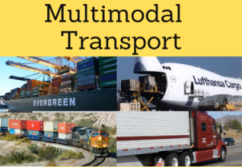
- Introduction to the Multimodal / Combined Transport
- Intermodal Transport Chain
- Multimodal Transport Operator
- Intermodal Loading Units (ILU)
- Road-Rail Combined Transport
- United Nations Convention on International Multimodal Transport of Goods (Geneva, 1980)
- United Nations Convention on Contracts for the International Carriage of Goods Wholly or Partly by Sea (Rotterdam Rules)
- Combined Transport Bill of Lading (CTBL) of the FIATA
- Insurance and costs of the Multimodal Transport

The objectives of the subject “Multimodal / Combined Transport” are the following:
- To understand the importance of the Multimodal Transport in International Trade
- To learn the key concepts related to the Multimodal transport (Intermodal Transport Units, Multimodal Transport Operator...)
- To know the role of the International Federation of Freight Forwarders Associations (FIATA)
- To analyze the Multimodal / Combined Transport Chain and the key players
- To study the main Conventions related to the Multimodal/Combined Transport
- To know the features of the Road-Rail Combined Transport
- To analyze the documents related to the Multimodal/Combined Transport of goods (Combined Transport Bill of Lading)
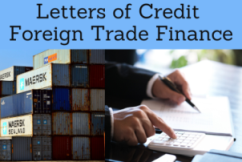
International Payment Methods. Documentary Credits (4 ECTS)
- Introduction to the International Methods of Payment and Letters of Credit
- Documentary Collections
- The importance of the Documentary Credits in Foreign Trade
- Letter of credit
- Types, modalities and variants of the Documentary Credits
- Analysis of the contents of a letter of credit
- Analysis of the Documentary Credits
- UCP 600
- E-UCP
- United Nations Conventions related to the International Payment Methods;
- United Nations Convention on Independent Guarantees and Stand-by Letters of Credit
- United Nations Convention on International Bills of Exchange and International Promissory Notes
- United Nations Convention on the Transfer of Credits in International Trade
- UNCITRAL Model Law on International Credit Transfers
The objectives of the subject “Documentary Credits and International Payment Methods” are the following:
- To analyze the different Payment Methods used in International Trade
- To understand the fundamental role of the Documentary Credits in International Trade as well as their operation and modalities
- To know how to manage a foreign trade operation through a documentary credit

International Market Research (2 ECTS)
- Introduction to the Global Market Research
- How to export?
- What to export?
- Where to export?
- Methods of conducting a global market research
- Quantitative analysis
- Qualitative methods
- Market profitability
- Sales potential in the foreign markets
- PEST analysis (Political, Economic, Social, and Technological Factors)
- Case Study: Market research using the market access tool (MADB) of the EU
The main purpose of the Subject “International market research” is to understand the key tools and concepts related to the international market research and how best to apply them.
- To understand the importance of the international market research in the strategies of Internationalization
- To know how to analyze an international market research
- To learn how to use the PEST analysis (Political, Economic, Social, and Technological)
This will be achieved by:
- Analysing the goals of researching a new export market
- Outlining the features of both qualitative and quantitative analysis
- Detailing the type of information that the student should obtain to assess the commercial viability of an export market
Export Prices Calculation (1 ECTS)
- Introduction to the International Pricing Policy
- Product life cycle and international pricing policy
- Calculation of the export prices
- International prices and Incoterms® 2020
- Analysis of competitor's prices
- International Pricing Strategies
- Pricing strategy when entering new export markets
- Pricing options available to the exporter
- E-Business and pricing policy
- Case Study:
- Pricing Policy and Inflation
- Price of Traded Goods and Services in Asia
The main purpose of the Subject “International Pricing Policy” is to understand the importance of an appropriate pricing strategy when entering new export markets.
- We are going to examine the pricing options available to the exporter and the outline the criteria to be used when establishing a pricing strategy
- We will also look at the criteria defined in pricing under the Incoterms
This will be achieved by:
- Examining the pricing options available to the exporter
- Outlining the criteria to be used when establishing a pricing strategy
- Analysing the goals of a pricing policy
- Detailing how to arrive at an export price
- Introducing the criteria defined in pricing under the Incoterms® 2020

International Promotion (4 ECTS)
1- International Promotion Policy.
- Introduction to the international promotion
- Promotion strategies: global, regional, and local
- Promotion strategy when entering new export markets
- Direct and indirect international promotion
- International Promotion MIX
- Advertising and publicity
- Advertising Agency
- Promotion campaign
- Brochures and catalogues
- Public relations
- Sponsoring and Fund Raising
2- International Fairs.
- International Fairs: a fundamental aspect of the international marketing
- Objectives of the participation in international fairs
- Preparation and organization of the international fairs
- The main the trade fairs in the World
- Case Study: Pininfarina in Auto Shanghai
3- Country Brand.
- Concept of the country brand
- Influence of the country brands on the global marketing
- Country brand as a competitive advantage
- Strategy of internationalization and country brand
- International rankings
- Rating agencies
4- International Business Trip
- International Business Travel
- Organization of the trip
- International Sales
- Post-trip activities
5- e-Promotion.
- Key concepts related to the e-Promotion
- Promoting online effectively
- Search engine positioning
6- Social Networks and international promotion.
- Web 2.0 in a globalized world
- Key Concepts: Folksonomy, mashup, Cloud computing
- Sharing content: Photos (Flickr), documents (Slideshare) and Video (Youtube)
- Facebook and Twitter Business applications
- Professional Social Networks (LinkedIn, Xing)
- Social Bookmarks
- Syndication: RSS news aggregators, Podcasting
- Use of Blogs in companies
- Case Study: Social Media Strategy
- Use of Wikis in enterprises
- Business Models of the Company 2.0
Intercultural Negotiation (2 ECTS)
- Introduction to the Intercultural Management
- Culture and global society
- Cultural dimension (Hofstede): Power distance, Individual, and Long-Term Orientation
- High and low context cultures (Edward Hall)
- Cross-cultural communication and the International Marketing Plan
- Intercultural Management and international business
- Cultural patterns and markets
- Countries classification
- Key strategies for dealing with new cultures
- Case Study:
- Hofstede dimensions and the Religions of the World
- Ceramic tiles perception in different markets
- How to negotiate successfully in..
The main objective of the Subject “Intercultural Management” is to gain an understanding of the nature of the different cultures and how to adapt the international marketing strategies to the different countries.
In this subject, the student will learn about adapting the global marketing approach to the different markets.
This will be achieved by:
- Examining how the diversity of the culture can influence the outcome of an International Marketing Plan
- Outlining key strategies to dealing with new cultures
- Detailing major theories related to the Intercultural Management
- Highlighting the critical errors to be avoided when dealing with different cultures
 Master Negocios Internacionales
Master Negocios Internacionales  Master en affaires internationales
Master en affaires internationales  Mestrado em Negócios Internacionais.
Mestrado em Negócios Internacionais.
(c) EENI Global Business School (1995-2024)
We do not use cookies
Top of this page


